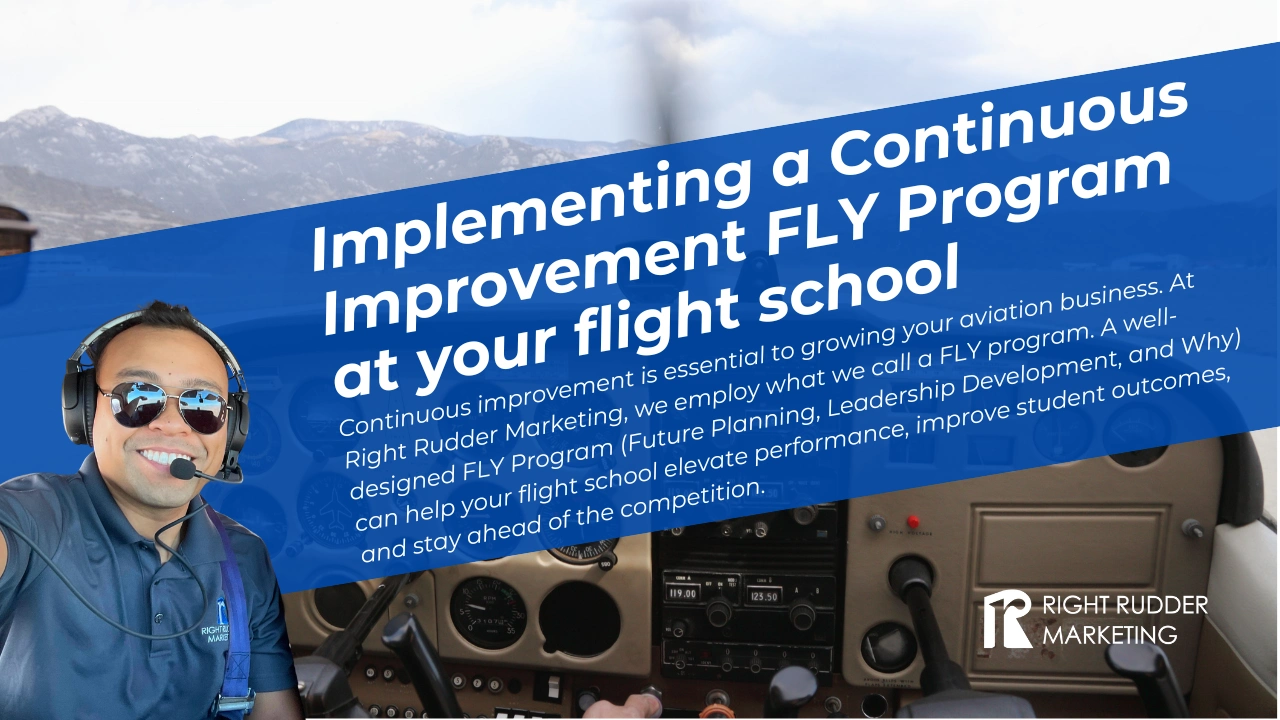
Implementing a Continuous Improvement FLY Program at Your Flight School
Written by:
Tim Jedrek
Continuous improvement is essential to growing your aviation business. At Right Rudder Marketing, we employ what we call a FLY program. A well-designed FLY Program (Future Planning, Leadership Development, and Why) can help your flight school elevate performance, improve student outcomes, and stay ahead of the competition. Here’s how to build one from the ground up. We base these principles on the EOS (Entrepreneur Operating System) framework.
Tune in on June 26 to learn how to implement continuous improvement at your flight school.
Event Details
- Date: June 26
- Time: 2 PM Central / 3 PM Eastern
1. Future Planning: Aligning Vision and Strategy
- Strategic Roadmapping: Use tools inspired by the EOS framework to define long-term goals, establish milestones, and maintain alignment across your team.
- Data-Driven Insights: Leverage data from student outcomes, instructor performance, and financial metrics to guide your planning.
- Adaptability: Build flexibility into your plans to adjust for market changes, regulatory updates, and new technology.
2. Leadership Development: Building a Strong, Accountable Team
- Training & Mentorship: Invest in leadership training for instructors and administrative staff to create a resilient leadership pipeline.
- Defined Roles & Responsibilities: Clarify team roles and ensure everyone is operating within their “zone of genius.”
- Quarterly Reviews & Scorecards: Implement performance scorecards and review sessions to maintain accountability and track growth.
3. Why: Creating Purpose-Driven Culture
- Mission Alignment: Connect daily operations and decisions to your school’s core mission and values.
- Internal Communication: Foster transparency and open dialogue to ensure alignment across departments.
- Student-Centric Mindset: Keep your students’ success at the center of your mission by consistently measuring and acting on their feedback.
4. Implementing the FLY Framework
- Start with a Leadership Session: Gather your core team and introduce the FLY model. Align on vision, define success, and assign ownership.
- Build Traction with Small Wins: Begin with one focus area—such as streamlining checkride scheduling or improving onboarding—and scale from there.
- Revisit and Iterate: Set a quarterly cadence for reflection and recalibration to ensure progress and sustainability.
Conclusion
The FLY Program is a mindset for the organization that needs to be maintained in your company culture. It is not a one-time thing that gets left behind after the first meeting. When implemented intentionally, it can transform your flight school into a purpose-driven, high-performance organization. Start small, stay consistent, and watch your school soar.
Want to see the FLY Program in action? Join our upcoming webinar for real-world examples and expert insights you can apply immediately.